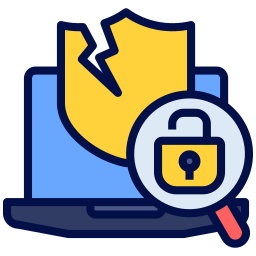
UC San Diego Company Cyber Security Posture
ucsd.eduRecognized as one of the top 15 research universities worldwide, our culture of collaboration sparks discoveries that advance society and drive economic impact. Everything we do is dedicated to ensuring our students have the opportunity to become changemakers, equipped with the multidisciplinary tools needed to accelerate answers to our world’s most pressing issues.
USD Company Details
university-of-california-at-san-diego
21329 employees
419899.0
611
Higher Education
ucsd.edu
Scan still pending
UC _2764672
In-progress
Between 800 and 900
This score is AI-generated and less favored by cyber insurers, who prefer the TPRM score.
 USD Global Score
USD Global Score.png)

UC San Diego Company Scoring based on AI Models
| Model Name | Date | Description | Current Score Difference | Score |
|---|---|---|---|---|
| AVERAGE-Industry | 03-12-2025 | This score represents the average cybersecurity rating of companies already scanned within the same industry. It provides a benchmark to compare an individual company's security posture against its industry peers. | N/A | Between 800 and 900 |
UC San Diego Company Cyber Security News & History
| Entity | Type | Severity | Impact | Seen | Url ID | Details | View |
|---|---|---|---|---|---|---|---|
| UCLA Health | Breach | 80 | 4 | 09/2015 | UCL14320422 | Link | |
Rankiteo Explanation : Attack with significant impact with customers data leaksDescription: UCLA Health experienced a data breach incident in September 2015 after one of its laptop got stolen. The stolen laptop contained the personal information of approximately 1,242 patient of the organization including names and medical record numbers. UCLA Health notified all affected patient and retraining those involved with the incident. | |||||||
| UCI Health | Breach | 90 | 4 | 03/2015 | UCI2241522 | Link | |
Rankiteo Explanation : Attack with significant impact with customers data leaksDescription: An employee of UC Irvine Medical Center unethically viewed thousands of patient records over a four-year period. The incident compromised the personal health information including names, dates of birth, gender, medical record numbers, height, weight, medical center account numbers, allergy information, home address, medical documentation, diagnoses, test orders and results, of 4,859 patients . The center investigated the incident with the help of external security experts and notifies the affected patients. | |||||||
| UC San Diego Health | Breach | 60 | 4 | 07/2021 | UCS22335223 | Link | |
Rankiteo Explanation : Attack with significant impact with customers data leaksDescription: UC San Diego Health suffered from a data breach that exposed number of patients, employees and others connected to UC San Diego Health potentially. It was found that the breach occurred via unauthorized access to some employee email accounts, but it did not affect the continuity of care for their patients. A UCSD Health spokesperson said Tuesday that ransomware, software often used to extort money from an organization, was not involved. The compromised information includes full names, addresses, dates of birth, email addresses, fax numbers, claims information including dates and costs of care received, laboratory results, medical diagnoses and conditions, medical record numbers, prescription information, treatment information, Social Security numbers, government identification numbers, financial account numbers, student identification numbers, usernames and passwords. They notified people, and the letters each person receives precisely reflect the information that would have been impacted for that particular person. | |||||||
| UCLA Health | Data Leak | 60 | 4 | 06/2022 | UCL11139223 | Link | |
Rankiteo Explanation : Attack with significant impact with customers data leaksDescription: UCLA health experienced a data breach incident that 94,000 patients personal information and health data to third parties. UCLA Health promptly disabled the use of the tools and launched an investigation. The compromised information includes patients’ URL/website addresses, provider names, specialty, ad campaign names, page views, IP addresses, third-party cookies, and hashed values of certain fields on the appointment request form, such as patient names, email addresses, mailing addresses, phone numbers, and genders. UCLA Health website and the UCLA Health mobile app were affected. The UCLA Health patient portal was not impacted. | |||||||
| UCLA | Ransomware | 100 | 5 | 06/2023 | UCL0443723 | Link | |
Rankiteo Explanation : Attack threatening the organization’s existenceDescription: The five new MOVEit assaults victims revealed on the dark web leak site for the Clop ransomware organization include the industrial behemoths Siemens Energy, Schneider Electric, werum.com, UCLA (http://ucla.edu), Abbie (http://abbvie.com), and Abbie. Worldwide, vital national infrastructures use Industrial Control Systems (ICS) from Siemens Energy and Schneider Electric. Threat actors claim they were able to compromise 100 different firms utilizing the most recently revealed MOVEit Transfer vulnerability CVE-2023-34362. The US government offers rewards for information that leads to the arrest, indictment, or location of dangerous actors. | |||||||
| UC San Diego Health | Ransomware | 100 | 7 | 10/2023 | UCS1014070724 | Link | |
Rankiteo Explanation : Attack that could injure or kill peopleDescription: UC San Diego Health experienced a ransomware attack threatening critical healthcare operations. As the medical industry increases reliance on technology, such attacks can have dire consequences on patient care and outcomes. The attack's costliness, with an average of $11 million according to IBM, poses risks to smaller healthcare systems' existence, potentially leading to their permanent closure. Patients in remote areas would be most affected due to the scarcity of nearby medical facilities. In response, federal funding has been allocated to develop better preventative and mitigative measures, focusing on cybersecurity in healthcare. | |||||||
| University of California San Francisco (UCSF) | Ransomware | 100 | 4 | 12/2024 | UCS000122224 | Link | |
Rankiteo Explanation : Attack with significant impact with customers data leaksDescription: The University of California San Francisco suffered a significant ransomware attack at the hands of the NetWalker group, which resulted in the loss of access to critical data. In order to recover the encrypted files, UCSF was compelled to pay a substantial ransom of $1.14 million. This incident stressed the vulnerability of major institutions to sophisticated cyber threats, particularly during sensitive times such as the COVID-19 pandemic when reliance on digital infrastructure is at its peak. The attack not only financially impacted the university but also highlighted the potential risks to privacy and the continuation of essential services. | |||||||
| UCSF Medical Center | Breach | 50 | 2 | 9/2013 | UCS158072625 | Link | |
Rankiteo Explanation : Attack limited on finance or reputationDescription: The California Office of the Attorney General reported a data breach involving UCSF Medical Center on October 2, 2013. The breach occurred on September 9, 2013, due to the theft of an unencrypted laptop from a locked vehicle, potentially affecting health information of individuals, including names and medical record numbers. | |||||||
UC San Diego Company Subsidiaries

Recognized as one of the top 15 research universities worldwide, our culture of collaboration sparks discoveries that advance society and drive economic impact. Everything we do is dedicated to ensuring our students have the opportunity to become changemakers, equipped with the multidisciplinary tools needed to accelerate answers to our world’s most pressing issues.
Access Data Using Our API

Get company history
.png)
USD Cyber Security News
Cybersecurity Flaws Could Derail High-profile Cycling Races
“Security vulnerabilities in wireless gear-shifting systems can critically impact rider safety and performance, particularly in professional ...
The Top 10 Best Colleges in San Diego for Tech Enthusiasts in 2025
UC San Diego is seriously leading the pack with its stellar tech programs, and TechCon SoCal 2025 is about to bring even more innovation to ...
CalIT2 Workshop Looks to the Future of Health and Medicine
The Magnetoencephalography (MEG) Center, which provides an advanced, non-invasive, painless technique for functional brain imaging to ...
UCSD Chancellor Pradeep Khosla Elected Fellow of Indian National Science Academy
University of California, San Diego Chancellor Pradeep K. Khosla has been chosen as one of six foreign fellows of the Indian National Science Academy.
New cybersecurity center at UC San Diego to research ransomware mitigation
“During a ransomware attack, hospitals often have to switch back to inefficient pen-and-paper methods of administration, and this slows down ...
UCSD Establishes Center for Healthcare Cybersecurity
“UC San Diego is a world leader in health care cybersecurity, and this new center will keep us on the cutting edge of this critically ...
UC San Diego Health Breach Tied to Phishing Attack
Authorities at the University of California San Diego Health reported a phishing attack led to a major breach of its network.
Ranking the Top 10 High-Paying Tech Jobs in San Diego in 2025
Discover the top 10 high-paying tech jobs in San Diego and what makes them stand out in 2025. Learn about roles at Qualcomm, Google, ...
Stefan Savage receives prestigious MacArthur Foundation fellowship
Stefan Savage, a renowned cybersecurity expert and professor of computer science at the University of California. San Diego, has been ...

USD Similar Companies

Harvard Medical School
At Harvard Medical School, our mission is to create and nurture a diverse community of the best people committed to leadership in alleviating human suffering caused by disease. With our vast reservoir of talent, extensive network of affiliates and commitment to problem solving, Harvard Medical Schoo

The Ohio State University
One of the largest universities in the United States, The Ohio State University is a leading research university and the model for Ohio's public higher education institutes. Founded in 1870 as a land-grant university, it consistently ranks as one of the top public universities in the United States.

Georgia State University
Georgia State is an urban public research university and national model for student success in Atlanta, the cultural and economic center of the Southeast. The largest university in the state and one of the largest in the nation, Georgia State provides its faculty and more than 51,000 students with u

The Open University
The Open University is an expert in flexible higher education that fits around your working life. We don’t make you choose between a degree and a salary – more than 76% of our students are in full or part time work, while 86% FTSE 100 companies have funded staff on OU courses. Employers includ

University of Rochester
The University of Rochester is a private research university located in Rochester, New York. Our campuses are home to more than 6,500 undergraduates and nearly 5,500 graduate students who come from across the United States and around the world to pursue their academic goals. We offer bachelor's, mas

The University of Queensland
For more than a century, The University of Queensland (UQ) has maintained a global reputation for delivering knowledge leadership for a better world. The most prestigious and widely recognised rankings of world universities consistently place UQ among the world's top universities. UQ has also wo

Frequently Asked Questions
Explore insights on cybersecurity incidents, risk posture, and Rankiteo's assessments.
USD CyberSecurity History Information
How many cyber incidents has USD faced?
Total Incidents: According to Rankiteo, USD has faced 8 incidents in the past.
What types of cybersecurity incidents have occurred at USD?
Incident Types: The types of cybersecurity incidents that have occurred incidents Ransomware, Breach and Data Leak.
What was the total financial impact of these incidents on USD?
Total Financial Loss: The total financial loss from these incidents is estimated to be $12.14 million.
How does USD detect and respond to cybersecurity incidents?
Detection and Response: The company detects and responds to cybersecurity incidents through containment measures with Disabled the use of the tools and communication strategy with Individuals were notified, and the letters each person receives precisely reflect the information that would have been impacted for that particular person. and third party assistance with external security experts and communication strategy with notifies the affected patients and remediation measures with Retraining involved personnel, Notifying affected patients.
Incident Details
Can you provide details on each incident?

Incident : Data Breach
Title: UCSF Medical Center Data Breach
Description: The California Office of the Attorney General reported a data breach involving UCSF Medical Center on October 2, 2013. The breach occurred on September 9, 2013, due to the theft of an unencrypted laptop from a locked vehicle, potentially affecting health information of individuals, including names and medical record numbers.
Date Detected: 2013-09-09
Date Publicly Disclosed: 2013-10-02
Type: Data Breach
Attack Vector: Theft of Unencrypted Laptop
Vulnerability Exploited: Physical Security

Incident : Ransomware
Title: UCSF Ransomware Attack
Description: The University of California San Francisco suffered a significant ransomware attack at the hands of the NetWalker group, which resulted in the loss of access to critical data. In order to recover the encrypted files, UCSF was compelled to pay a substantial ransom of $1.14 million. This incident stressed the vulnerability of major institutions to sophisticated cyber threats, particularly during sensitive times such as the COVID-19 pandemic when reliance on digital infrastructure is at its peak. The attack not only financially impacted the university but also highlighted the potential risks to privacy and the continuation of essential services.
Type: Ransomware
Threat Actor: NetWalker group
Motivation: Financial Gain

Incident : Ransomware
Title: UC San Diego Health Ransomware Attack
Description: UC San Diego Health experienced a ransomware attack threatening critical healthcare operations. As the medical industry increases reliance on technology, such attacks can have dire consequences on patient care and outcomes. The attack's costliness, with an average of $11 million according to IBM, poses risks to smaller healthcare systems' existence, potentially leading to their permanent closure. Patients in remote areas would be most affected due to the scarcity of nearby medical facilities. In response, federal funding has been allocated to develop better preventative and mitigative measures, focusing on cybersecurity in healthcare.
Type: Ransomware
Motivation: Financial Gain

Incident : Data Breach and Ransomware Attack
Title: MOVEit Transfer Vulnerability Exploitation by Clop Ransomware Group
Description: The Clop ransomware group exploited the MOVEit Transfer vulnerability CVE-2023-34362 to compromise multiple organizations, including Siemens Energy, Schneider Electric, Werum, UCLA, and AbbVie.
Type: Data Breach and Ransomware Attack
Attack Vector: Vulnerability Exploitation
Vulnerability Exploited: CVE-2023-34362
Threat Actor: Clop Ransomware Group
Motivation: Financial Gain

Incident : Data Breach
Title: UCLA Health Data Breach
Description: UCLA Health experienced a data breach incident affecting 94,000 patients' personal information and health data to third parties.
Type: Data Breach

Incident : Data Breach
Title: UC San Diego Health Data Breach
Description: UC San Diego Health suffered from a data breach that exposed the information of patients, employees, and others connected to UC San Diego Health potentially.
Type: Data Breach
Attack Vector: Unauthorized access to employee email accounts

Incident : Data Breach
Title: Unauthorized Access to Patient Records at UC Irvine Medical Center
Description: An employee of UC Irvine Medical Center unethically viewed thousands of patient records over a four-year period. The incident compromised the personal health information including names, dates of birth, gender, medical record numbers, height, weight, medical center account numbers, allergy information, home address, medical documentation, diagnoses, test orders and results, of 4,859 patients.
Type: Data Breach
Attack Vector: Unauthorized Access
Vulnerability Exploited: Insider Threat
Threat Actor: Employee
Motivation: Unethical Behavior

Incident : Data Breach
Title: UCLA Health Data Breach
Description: UCLA Health experienced a data breach incident in September 2015 after one of its laptops got stolen. The stolen laptop contained the personal information of approximately 1,242 patients of the organization including names and medical record numbers. UCLA Health notified all affected patients and retrained those involved with the incident.
Date Detected: 2015-09
Type: Data Breach
Attack Vector: Theft of Laptop
What are the most common types of attacks the company has faced?
Common Attack Types: The most common types of attacks the company has faced is Breach.
How does the company identify the attack vectors used in incidents?
Identification of Attack Vectors: The company identifies the attack vectors used in incidents through Employee email accounts.
Impact of the Incidents
What was the impact of each incident?

Incident : Data Breach UCS158072625
Data Compromised: Names, Medical Record Numbers

Incident : Ransomware UCS000122224
Financial Loss: $1.14 million
Systems Affected: Critical data systems
Operational Impact: Loss of access to critical data

Incident : Ransomware UCS1014070724
Financial Loss: Average of $11 million
Systems Affected: Critical healthcare operations
Operational Impact: Threat to patient care and outcomes

Incident : Data Breach UCL11139223
Data Compromised: URL/website addresses, Provider names, Specialty, Ad campaign names, Page views, IP addresses, Third-party cookies, Hashed values of certain fields on the appointment request form, such as patient names, email addresses, mailing addresses, phone numbers, and genders
Systems Affected: UCLA Health website, UCLA Health mobile app

Incident : Data Breach UCS22335223
Data Compromised: full names, addresses, dates of birth, email addresses, fax numbers, claims information including dates and costs of care received, laboratory results, medical diagnoses and conditions, medical record numbers, prescription information, treatment information, Social Security numbers, government identification numbers, financial account numbers, student identification numbers, usernames and passwords

Incident : Data Breach UCI2241522
Data Compromised: names, dates of birth, gender, medical record numbers, height, weight, medical center account numbers, allergy information, home address, medical documentation, diagnoses, test orders and results

Incident : Data Breach UCL14320422
Data Compromised: Names, Medical Record Numbers
What is the average financial loss per incident?
Average Financial Loss: The average financial loss per incident is $1.52 million.
What types of data are most commonly compromised in incidents?
Commonly Compromised Data Types: The types of data most commonly compromised in incidents are Names, Medical Record Numbers, Personal Information, Health Data, full names, addresses, dates of birth, email addresses, fax numbers, claims information including dates and costs of care received, laboratory results, medical diagnoses and conditions, medical record numbers, prescription information, treatment information, Social Security numbers, government identification numbers, financial account numbers, student identification numbers, usernames and passwords, names, dates of birth, gender, medical record numbers, height, weight, medical center account numbers, allergy information, home address, medical documentation, diagnoses, test orders and results and Personal Information.
Which entities were affected by each incident?

Incident : Ransomware UCS000122224
Entity Type: Educational Institution
Industry: Education
Location: San Francisco, CA

Incident : Ransomware UCS1014070724
Entity Type: Healthcare Provider
Industry: Healthcare
Location: San Diego, California

Incident : Data Breach and Ransomware Attack UCL0443723
Entity Type: Industrial Control Systems Provider
Industry: Energy

Incident : Data Breach and Ransomware Attack UCL0443723
Entity Type: Industrial Control Systems Provider
Industry: Energy Management and Automation

Incident : Data Breach and Ransomware Attack UCL0443723
Entity Type: Software Company
Industry: Pharmaceuticals and Biotech

Incident : Data Breach and Ransomware Attack UCL0443723
Entity Type: University
Industry: Education
Location: Los Angeles, CA

Incident : Data Breach and Ransomware Attack UCL0443723
Entity Type: Pharmaceutical Company
Industry: Pharmaceuticals

Incident : Data Breach UCL11139223
Entity Type: Healthcare Provider
Industry: Healthcare
Location: Los Angeles, California
Customers Affected: 94,000

Incident : Data Breach UCS22335223
Entity Type: Healthcare
Industry: Healthcare
Location: San Diego, CA

Incident : Data Breach UCI2241522
Entity Type: Hospital
Industry: Healthcare
Location: Irvine, CA
Customers Affected: 4,859 patients

Incident : Data Breach UCL14320422
Entity Type: Healthcare Provider
Industry: Healthcare
Customers Affected: 1,242
Response to the Incidents
What measures were taken in response to each incident?

Incident : Data Breach UCL11139223
Containment Measures: Disabled the use of the tools

Incident : Data Breach UCS22335223
Communication Strategy: Individuals were notified, and the letters each person receives precisely reflect the information that would have been impacted for that particular person.

Incident : Data Breach UCI2241522
Third Party Assistance: external security experts
Communication Strategy: notifies the affected patients

Incident : Data Breach UCL14320422
Remediation Measures: Retraining involved personnel, Notifying affected patients
How does the company involve third-party assistance in incident response?
Third-Party Assistance: The company involves third-party assistance in incident response through external security experts.
Data Breach Information
What type of data was compromised in each breach?

Incident : Data Breach UCS158072625
Type of Data Compromised: Names, Medical Record Numbers
Sensitivity of Data: High
Data Encryption: No
Personally Identifiable Information: Yes

Incident : Data Breach UCL11139223
Type of Data Compromised: Personal Information, Health Data
Number of Records Exposed: 94,000
Sensitivity of Data: High
Personally Identifiable Information: Patient names, Email addresses, Mailing addresses, Phone numbers, Genders

Incident : Data Breach UCS22335223
Type of Data Compromised: full names, addresses, dates of birth, email addresses, fax numbers, claims information including dates and costs of care received, laboratory results, medical diagnoses and conditions, medical record numbers, prescription information, treatment information, Social Security numbers, government identification numbers, financial account numbers, student identification numbers, usernames and passwords
Sensitivity of Data: High
Personally Identifiable Information: True

Incident : Data Breach UCI2241522
Type of Data Compromised: names, dates of birth, gender, medical record numbers, height, weight, medical center account numbers, allergy information, home address, medical documentation, diagnoses, test orders and results
Number of Records Exposed: 4,859
Sensitivity of Data: High
Personally Identifiable Information: names, dates of birth, gender, medical record numbers, height, weight, medical center account numbers, allergy information, home address

Incident : Data Breach UCL14320422
Type of Data Compromised: Personal Information
Number of Records Exposed: 1,242
Sensitivity of Data: High
Personally Identifiable Information: Names, Medical Record Numbers
What measures does the company take to prevent data exfiltration?
Prevention of Data Exfiltration: The company takes the following measures to prevent data exfiltration: Retraining involved personnel, Notifying affected patients.
How does the company handle incidents involving personally identifiable information (PII)?
Handling of PII Incidents: The company handles incidents involving personally identifiable information (PII) through was Disabled the use of the tools.
Ransomware Information
Was ransomware involved in any of the incidents?

Incident : Ransomware UCS000122224
Ransom Demanded: $1.14 million
Ransom Paid: $1.14 million
Ransomware Strain: NetWalker
Data Encryption: Yes

Incident : Data Breach and Ransomware Attack UCL0443723
Ransomware Strain: Clop
Lessons Learned and Recommendations
What recommendations were made to prevent future incidents?

Incident : Ransomware UCS1014070724
Recommendations: Federal funding allocated to develop better preventative and mitigative measures, focusing on cybersecurity in healthcare.
What recommendations has the company implemented to improve cybersecurity?
Implemented Recommendations: The company has implemented the following recommendations to improve cybersecurity: Federal funding allocated to develop better preventative and mitigative measures, focusing on cybersecurity in healthcare..
References
Where can I find more information about each incident?

Incident : Data Breach UCS158072625
Source: California Office of the Attorney General
Date Accessed: 2013-10-02

Incident : Data Breach UCL11139223
Source: UCLA Health
Where can stakeholders find additional resources on cybersecurity best practices?
Additional Resources: Stakeholders can find additional resources on cybersecurity best practices at and Source: California Office of the Attorney GeneralDate Accessed: 2013-10-02, and Source: UCLAUrl: http://ucla.edu, and Source: AbbVieUrl: http://abbvie.com, and Source: UCLA Health.
Investigation Status
What is the current status of the investigation for each incident?

Incident : Data Breach UCL11139223
Investigation Status: Ongoing
How does the company communicate the status of incident investigations to stakeholders?
Communication of Investigation Status: The company communicates the status of incident investigations to stakeholders through were Individuals were notified, and the letters each person receives precisely reflect the information that would have been impacted for that particular person. and notifies the affected patients.
Initial Access Broker
How did the initial access broker gain entry for each incident?

Incident : Data Breach UCS22335223
Entry Point: Employee email accounts
Post-Incident Analysis
What is the company's process for conducting post-incident analysis?
Post-Incident Analysis Process: The company's process for conducting post-incident analysis is described as external security experts.
Additional Questions
General Information
Has the company ever paid ransoms?
Ransom Payment History: The company has Paid ransoms in the past.
What was the amount of the last ransom demanded?
Last Ransom Demanded: The amount of the last ransom demanded was $1.14 million.
Who was the attacking group in the last incident?
Last Attacking Group: The attacking group in the last incident were an NetWalker group, Clop Ransomware Group and Employee.
Incident Details
What was the most recent incident detected?
Most Recent Incident Detected: The most recent incident detected was on 2013-09-09.
What was the most recent incident publicly disclosed?
Most Recent Incident Publicly Disclosed: The most recent incident publicly disclosed was on 2013-10-02.
Impact of the Incidents
What was the highest financial loss from an incident?
Highest Financial Loss: The highest financial loss from an incident was $1.14 million.
What was the most significant data compromised in an incident?
Most Significant Data Compromised: The most significant data compromised in an incident were Names, Medical Record Numbers, URL/website addresses, Provider names, Specialty, Ad campaign names, Page views, IP addresses, Third-party cookies, Hashed values of certain fields on the appointment request form, such as patient names, email addresses, mailing addresses, phone numbers, and genders, full names, addresses, dates of birth, email addresses, fax numbers, claims information including dates and costs of care received, laboratory results, medical diagnoses and conditions, medical record numbers, prescription information, treatment information, Social Security numbers, government identification numbers, financial account numbers, student identification numbers, usernames and passwords, names, dates of birth, gender, medical record numbers, height, weight, medical center account numbers, allergy information, home address, medical documentation, diagnoses, test orders and results, Names and Medical Record Numbers.
What was the most significant system affected in an incident?
Most Significant System Affected: The most significant system affected in an incident were Critical data systems and Critical healthcare operations and UCLA Health website, UCLA Health mobile app.
Response to the Incidents
What third-party assistance was involved in the most recent incident?
Third-Party Assistance in Most Recent Incident: The third-party assistance involved in the most recent incident was external security experts.
What containment measures were taken in the most recent incident?
Containment Measures in Most Recent Incident: The containment measures taken in the most recent incident was Disabled the use of the tools.
Data Breach Information
What was the most sensitive data compromised in a breach?
Most Sensitive Data Compromised: The most sensitive data compromised in a breach were Names, Medical Record Numbers, URL/website addresses, Provider names, Specialty, Ad campaign names, Page views, IP addresses, Third-party cookies, Hashed values of certain fields on the appointment request form, such as patient names, email addresses, mailing addresses, phone numbers, and genders, full names, addresses, dates of birth, email addresses, fax numbers, claims information including dates and costs of care received, laboratory results, medical diagnoses and conditions, medical record numbers, prescription information, treatment information, Social Security numbers, government identification numbers, financial account numbers, student identification numbers, usernames and passwords, names, dates of birth, gender, medical record numbers, height, weight, medical center account numbers, allergy information, home address, medical documentation, diagnoses, test orders and results, Names and Medical Record Numbers.
What was the number of records exposed in the most significant breach?
Number of Records Exposed in Most Significant Breach: The number of records exposed in the most significant breach was 100.1K.
Ransomware Information
What was the highest ransom demanded in a ransomware incident?
Highest Ransom Demanded: The highest ransom demanded in a ransomware incident was $1.14 million.
What was the highest ransom paid in a ransomware incident?
Highest Ransom Paid: The highest ransom paid in a ransomware incident was $1.14 million.
Lessons Learned and Recommendations
What was the most significant recommendation implemented to improve cybersecurity?
Most Significant Recommendation Implemented: The most significant recommendation implemented to improve cybersecurity was Federal funding allocated to develop better preventative and mitigative measures, focusing on cybersecurity in healthcare..
References
What is the most recent source of information about an incident?
Most Recent Source: The most recent source of information about an incident are California Office of the Attorney General, UCLA, AbbVie and UCLA Health.
What is the most recent URL for additional resources on cybersecurity best practices?
Most Recent URL for Additional Resources: The most recent URL for additional resources on cybersecurity best practices is http://ucla.edu, http://abbvie.com .
Investigation Status
What is the current status of the most recent investigation?
Current Status of Most Recent Investigation: The current status of the most recent investigation is Ongoing.
Initial Access Broker
What was the most recent entry point used by an initial access broker?
Most Recent Entry Point: The most recent entry point used by an initial access broker was an Employee email accounts.
What Do We Measure?
















Every week, Rankiteo analyzes billions of signals to give organizations a sharper, faster view of emerging risks. With deeper, more actionable intelligence at their fingertips, security teams can outpace threat actors, respond instantly to Zero-Day attacks, and dramatically shrink their risk exposure window.
These are some of the factors we use to calculate the overall score:
Identify exposed access points, detect misconfigured SSL certificates, and uncover vulnerabilities across the network infrastructure.
Gain visibility into the software components used within an organization to detect vulnerabilities, manage risk, and ensure supply chain security.
Monitor and manage all IT assets and their configurations to ensure accurate, real-time visibility across the company's technology environment.
Leverage real-time insights on active threats, malware campaigns, and emerging vulnerabilities to proactively defend against evolving cyberattacks.




